#Famous Landmarks of America
Note
Reverse unpopular opinion: AMERICA 🗽🇺🇸🦅
This one feels easy to me. There is much to admire about the United States.
The list of famous American cultural figures and landmarks you can name check is basically limitless: jazz, rock and roll, Broadway, comic books, Hollywood, Frank Lloyd Wright, Frank Furness, Frank Gehry (lotta architects named "Frank" for some reason), John Steinbeck, James Baldwin, Walt Whitman, Ralph Ellison, Octavia Butler, Ernest Hemingway, Ursula K. LeGuin, Raymond Chandler, John Coolidge Adams, Aaron Copeland, Duke Ellington, the Hudson River School, the Brandywine School, etc., etc. American culture is phenomenally rich (which makes sense for a wealthy country of 330 million!) and phenomenally influential, and includes everything from the relentlessly popular to the deliberately obtuse to the avant-garde.
As a political enterprise, the United States is, of course, deeply flawed. I think @apricops is basically right here. But the combination of early idealism (despite the compromises that undercut that idealism) and civic nationalism (which can't help but be inclusive in the long run) means that there is always an argument close to the core of American identity to improve and expand the idealistic elements of the American political project, and frequently in the past where nativism and xenophobia and reactionary trends have come into conflict with those idealistic elements, it is the idealistic elements that have won. Not easily, not without struggle and bloodshed and grief, but these are victories nevertheless, and I think they're victories bolstered by the hopes of what the United States could be, and what its ideals could mean, if we take them seriously enough.
42 notes
·
View notes
Text
Submitted via Google Form:
How much can a city get away with not actually giving streets a specific name? As in all the streets are like First Street, or First Street West, etc... Any names are descriptive and the only thing available like if there is one hospital the street it's on might be called Hospital Street, and the road that leads to the only train station is called Train Street, the street with the only university is called University Street. Even when they have actual names, the street is still just descriptive. I think this might make a place very easy to navigate? The only thing is you've got to know where those unique descriptors are. Something like this has got to be planned right? Because if things get changed, it can go awry. The streets will have to fairly straight in a grid layout right so streets can't crisscross every which way or be too curvy.
Licorice: In my town, which was founded in Roman times, we do indeed have streets called “Street of the Hospital”, “Street of the Train Station”, “Street of the Cathedral”, “Street of the Cliffs”, “Street of the Windmills” and so on. Most UK towns have streets called “Station Road”, “Church Road”, and of course the ubiquitous “High Street” where all the shops are congregated, which in every town is always known as the High Street even when its official name is something else. It’s the equivalent of Main Street in the USA.
Does one need to know the location of the landmarks after which these streets are named? I don’t see why one should. Once you find a road called “Street of the Train Station”, you can be pretty sure it’s going to lead you to the train station.
A lot depends on whether your city is a planned city or one that has grown up organically over the centuries.
Street names in older, organic cities tend to derive from one of the following sources
A landmark on the street, e.g. Church Street. The landmark doesn’t have to be man-made. Fleet Street in London was, in the middle ages, a street that ran along the river Fleet, which no longer exists.
The place the road leads to, e.g. Oxford Street, Liverpool Street
The occupation of the people who lived and worked on that street, e.g. Threadneedle Street
Streets in planned cities or planned subdivisions are named by the planners and often follow some kind of theme. In the UK, new housing developments in Victorian times might commemorate famous battles (Alma Terrace, Lucknow Terrace), places in the colonies (Canberra Drive), historic figures (Wellington Road), and so on. In my European town, one of the main streets is named after the date on which we were liberated from occupation by Napoleon.
In Hamilton, Ontario, which was constructed on a grid system in the 19th century, the main streets are (if I recall correctly) named after the family of the founder, George Hamilton, or the family of Sir Allan Napier McNab, a local bigwig - they’re called John Street, James Street, Mary Street and so on.
Trees are a perennially popular naming theme for street planners in North America. Chestnut Street, Elm Street, Mulberry Street….
The Romans built a lot of new towns. The grid system was widely used by the Romans and was based on the layout of their army camps. You might find it interesting to look up Roman city planning and see how they named their roads. It sounds like you want your city to be a practical city, and the Romans were eminently practical people. They knew how to design a town that people would find it easy to live in.
Utuabzu: A lot, really. Kyōto has gotten away with it for over a thousand years in its historic core. Venice has street names, but few signs or indicators of what street one is on or what address a building has, and it has also been functional for over a thousand years. In a lot of older cities, people navigate more by landmarks than by street addresses, which makes sense, because any urban environment older than about 150 years was built to be navigated on foot, and likely has a bunch of little alleyways and shortcuts that wouldn’t show up on a street map but which all the locals know and use constantly. Pre-internet and without a car, getting directions in the form of landmarks was generally going to be more useful than a street address, particularly because, as Licorice pointed out, most streets in older, organic cities were named for landmarks or some visible characteristic (like who lived and worked there).
Even when the landmark is lost or moved, the name often still endures as a fossilised bit of urban history. The hospital might move, but the street it was on would still get called Old Hospital Street, because everyone was used to it being Hospital Street and it’d be annoying to have to learn a new name for the place, while the new location would either keep it’s pre-existing name (eg. the new hospital is on Station Street, so they call it the Station Street Hospital) or it would get called something like New Hospital Street.
Oftentimes old cities are very dense and have narrow, winding street networks with names that seem to change arbitrarily, but this isn’t always the case. Almost all Roman cities were founded with a grid, and the Roman foundation is roughly square or rectangular (eg. The City of London, Jerusalem’s Old City*, Florence), although these grids all break down very quickly outside the original Roman walls. Cities in the Sinosphere (the region of the world historically under heavy Chinese cultural influence) were also often initially built on a grid, such as Kyōto, which I referenced earlier. And like Kyōto, many don’t have regularly used street names. Grids are also common in Spanish colonial cities, because almost all of them were laid out following the regulations in the ley de los indes, a Spanish law that (among other things) governed how and where new colonies were to be established. Consequently, almost all Spanish colonial cities have a very similar layout in their historic cores, with a central square and a grid radiating out from there.
Prior to the late 19th Century and the creation of the suburbs, most of the time these grids broke down because of unplanned informal development outside the area covered by the initial city plan. In a lot of the world this still happens frequently. And oftentimes these informal settlements become officially part of the urban fabric simply because it would be too much work to remove them.
17 notes
·
View notes
Text

Shiprock is a prominent landmark located in the New Mexico part of the Dinétah. It is one of the most important natural and spiritual symbols of the Navajo people, one of the largest Indigenous tribes in North America. In Navajo legend, Shiprock is called "Tsé Bitʼaʼí," which means "Rock with Wings." It is believed to be a giant bird that carried the Navajo people from the north to their current homeland. Shiprock is a sacred and revered place, often associated with traditional ceremonies and storytelling. One famous legend recounts that during the Navajo migration, they were protected by a giant bird, which later transformed into this rock formation. The Navajo believe that the spirits of their ancestors still dwell there.
Shiprock is not only a geological wonder but also an important symbol of Navajo culture and tradition. It represents the deep connection between the Navajo people and their land, as well as conveying the stories and myths of one of the largest Indigenous tribes in America. Respecting and preserving Shiprock is essential to maintain this unique cultural and natural heritage for future generations. H/t@Native Culture
[Robert Scott Horton]
* * *
“Let me have clear thoughts, clear speech, and a good path to walk this day,” I prayed as I watched the rising sun.”
― Joseph Bruchac, Code Talker: A Novel About the Navajo Marines of World War Two
+
“I leaned way back to gaze at the blanket of blue sky where a few small clouds hung, white as the fleece of a new lamb. “Even out on the ocean,” Bill said, “Father Sky will be above us. We will never be forgotten by the sky.”
― Joseph Bruchac, Code Talker: A Novel About the Navajo Marines of World War Two
20 notes
·
View notes
Text
As freshmen at New York University’s film school, some chums and I had an unusual greeting. “We live on rice gruel!” we would say if we saw one another around campus. “We’ll make do on millet!” was the reply.
This back-and-forth comes from an early scene in Akira Kurosawa’s Seven Samurai (1954), a movie somewhat force-fed to us on our first day to teach concepts about the language of cinema such as shot/reverse shot and the fourth wall—conventions that today’s students already have in their blood having played with iPhones before they could walk. Though presented as a literal classroom assignment, Seven Samurai’s appropriation as an inside joke among know-it-all 18-year-olds is proof that watching this landmark of world cinema does not feel like homework. Indeed, revisiting the “good guys with a code facing an unwinnable battle” picture for its 70th anniversary, remastered and appearing in cinemas across North America this summer, reminded me that it’s just as fun now as it ever was.
If one had to chisel a Mount Rushmore of so-called foreign films from the influential midcentury period, surely the image of Toshiro Mifune’s mad swordsman Kikuchiyo from Seven Samurai would be among the four granite faces, right next to the cloaked figure of death from Ingmar Bergman’s The Seventh Seal (1957), Marcello Mastroianni with the fedora and whip from Federico Fellini’s self-mythologizing 8½ (1963), and Jean-Pierre Léaud’s truant teen in François Truffaut’s directorial debut The 400 Blows (1959). (For the French nouvelle vague, you could also make the case for Jean-Luc Godard’s Breathless, but I’m picking The 400 Blows because this way they all have numbers in the title.)
Though Kurosawa was already a known quantity internationally after the release of Rashomon (1950), a period drama in which several people recall a violent incident differently depending on their point of view, Seven Samurai was both a domestic success and a ripping-enough yarn—swords! archery! horses! mud! gruel!—to engage the rest of the world.
Japanese cinema of the postwar period was initially reluctant to dig into its samurai storytelling heritage, the notion of blind loyalty to feudal lords being understandably less popular at the time. The two most famous Japanese films released just before and after Seven Samurai remain Yasujiro Ozu’s Tokyo Story (1953), basically an enormous guilt trip pointed at modernity for letting down their elders, and Ishiro Honda’s Godzilla (1954), a nation’s collective apocalyptic nightmare that somehow mutated into a still thriving merchandise line. Seven Samurai is set in the late 1500s, during the Sengoku period of civil war, a chaotic time that found many of the samurai class without masters. Many of these men became mercenaries, but imagine a story in which some of them (seven, if you will) decided to join forces against impossible odds because it was the righteous thing to do. In revisiting classic Japanese heroism but acknowledging the then-current sentiment, the picture had its rice gruel and ate it too.
The tumultuous setting depicted in the film—the most expensive in Japanese history at the time—no doubt resonated with a Japan that was modernizing rapidly, as did the secondary theme, blurring the lines of a previously clear class system. The highborn Katsushiro (Isao Kimura) falling for the farmer’s daughter Shino (Keiko Tsushima) amid the endless meadows of chrysanthemums, and Mifune’s Kikuchiyo, revealed to be a fraud to the samurai class but one who proves himself in combat, may feel like classic movie characters, but to a postwar Japan in search of a new identity, these transgressions resonated on a much deeper level.
Seven Samurai has a very simple story that perfectly suits its several high-energy set pieces. The 207-minute epic (that’s about 29 minutes per samurai) is set during a time when the countryside is terrorized by bandits who plunder small villages, depleting their harvests and kidnapping women. Already brutalized villagers, aware that they will soon be targeted again, decide to defend themselves by hiring some outside muscle. But how can they afford to pay (see above: “We live on rice gruel!”)? you may wonder. The wise elder who lives inside a mill with a water wheel providing an incessant warlike beat knows the answer: Don’t just find samurai, “find hungry samurai.”
Timid representatives of the village head to town and witness the bravery and creative thinking of Kambei (Takashi Shimura). They convince him to take the gig, and then he assembles his crew. This includes Kyuzo (Seiji Miyaguchi), a cold-as-ice swordsman; Gorobei (Yoshio Inaba), a brilliant tactician; the eager silver-spoon apprentice Katsushiro; and the loose-cannon Kikuchiyo, who, in time, emerges as the real star of the show. (There are two other guys: One is kind of the morale officer, and the other is just Kambei’s pal.) Anyway, if the plot seems familiar, yes, it has been adapted for Western cinema several times, most notably as the gunslinging The Magnificent Seven (both in 1960 and 2016), sci-fi romp Battle Beyond the Stars (1980), and, if you want to stretch it, the dopey comedy Three Amigos! (1986) and the Pixar cartoon A Bug’s Life (1998). Beyond that, a great many standard cinematic tropes have their roots in this movie.
Most obvious is the first act of the film, in which Kambei builds up the team. There’s no need to overly intellectualize it; it’s just fun to watch him size up potential comrades, test them out, and then make his appeal. There’s also a wonderful moment in which we think we’ve got a new addition but the samurai in question shrugs off the approach when he hears there’s no money or fame in the job. Should Disney ever purchase Toho Studios, we can maybe expect a limited streaming series to find out whatever happened to that guy. Anyway, every movie from The Dirty Dozen to The Blues Brothers to The Right Stuff to Ocean’s Eleven to School of Rock owes a lot to Seven Samurai.
Another influential development is how the villagers (and we in the audience) first meet Kambei. There is some tumult in town as a thief has kidnapped a child and barricaded himself inside a building. Kambei cuts off his hair (a very big deal for a samurai), poses as a monk, and then, after a series of badass moves, rescues the child and kills the baddie in slow motion. Introducing the hero through a mini-mission before we get to the real mission is now so common (think every single James Bond movie) that it’s funny to think it had to originate somewhere.
Most of the so-called movie brats of New Hollywood revered Kurosawa, but none so much as George Lucas, who would later use his clout to help the Japanese director secure funding for his expansive project Kagemusha. While there are more one-to-one alignments between other Kurosawa films and Star Wars (most famously, the original R2-D2 and C-3PO in 1958’s The Hidden Fortress, two comic-relief peasants tagging along on an adventure to save a princess), there’s still a lot in Seven Samurai that made it to the galaxy far, far away.
For starters, there are those wipe transitions between scenes. And then who is the wise elder hunched in the dark speaking truncated wisdom if not The Empire Strikes Back’s version of Yoda? The romance between Katsushiro and Shino is something like a Han Solo-Princess Leia dynamic in reverse, as well. On a technical level, though, one can point to the rising action of the final battle. While there is no exploding Death Star, Kurosawa, who deployed multiple cameras shooting concurrently, cuts not just between different angles of the same fight but between several skirmishes all building to the final thrilling, albeit pyrrhic, victory.
Most striking for its time—and still fiery today—is Seven Samurai’s most impressive element, Mifune. An explosive performer by any standard, let alone the typically taciturn style seen in Japanese movies of the period, Mifune is like a cross between Stanley Kowalski and Woody Woodpecker: muscular one minute, flamboyantly loosey-goosey the next. Like Marlon Brando in A Streetcar Named Desire, Mifune dominates every scene he is in with an unpredictable magnetism. (Though never stated as such, John Belushi’s famous samurai character on Saturday Night Live is basically an exaggerated version of Mifune.) Kikuchiyo is a drunkard and a brute but also silly and, when necessary, fragile. His scene rescuing an infant from a burning building is probably the best thing in the entire movie. Any other actor could have played the part as merely loud and annoying, but Mifune turns the role into something sensuous, mesmerizing, and sui generis. There are many reasons we’re still talking about this movie 70 years later, and the biggest reason of all is him.
The anniversary of the picture means its first remastering to 4K and a significant release in North America. (Not just New York and Los Angeles but places including Akron, Ohio; Paducah, Kentucky; and Kitchener, Ontario—here’s the full list.) With a 15-minute intermission plus a little time to buy popcorn, we’re talking about a four-hour commitment at the movie theater. With today’s limited attention span and hectic schedules, programming this film may seem like going up against impossible odds. Hopefully, there are enough people out there still ready to heed the call and do what’s right, no matter the cost.
20 notes
·
View notes
Photo
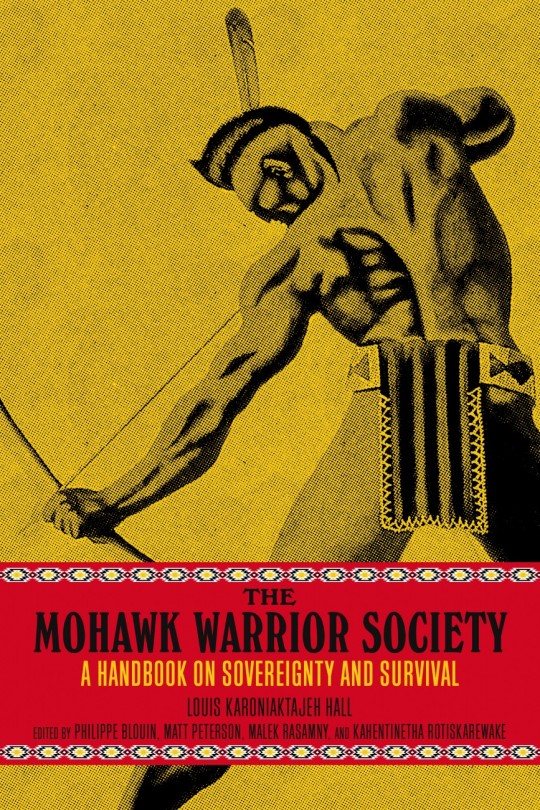
New! Now available in our online store is a brand-new book, The Mohawk Warrior Society: A Handbook On Sovereignty And Survival. The first collection of its kind, this anthology by members of the Mohawk Warrior Society uncovers a hidden history and paints a bold portrait of the spectacular experience of Kanien'kehá:ka survival and self-defense. Providing extensive documentation, context, and analysis, the book features foundational writings by prolific visual artist and polemicist Louis Karoniaktajeh Hall (1918–1993) — such as his landmark 1979 pamphlet The Warrior’s Handbook, as well as selections of his pioneering artwork. This book contains new oral history by key figures of the Rotisken'rhakéhte's revival in the 1970s and tells the story of the Warriors’ famous flag, their armed occupation of Ganienkeh in 1974, and the role of their constitution, the Great Peace, in guiding their commitment to freedom and independence. We hear directly the story of how the Kanien'kehá:ka Longhouse became one the most militant resistance groups in North America, gaining international attention with the Oka Crisis of 1990. Order now with global shipping at https://shop.workingclasshistory.com/products/the-mohawk-warrior-society-a-handbook-on-sovereignty-and-survival-louis-karoniaktajeh-hall https://www.facebook.com/photo.php?fbid=617352747104611&set=a.602588028581083&type=3
214 notes
·
View notes
Text




Tanacetum vulgare (tansy) and Rubus armeniacus (Himalayan/Armenian blackberry)
Yesterday I went to downtown with a particular goal in mind. I wanted to take postcard-like photos of flowers with famous Vancouver landmarks in the background. The results were a bit disappointing and all I found was a nice show of Rudbeckia by the Science Center (yesterday's post). However, I did manage to get some shots of BC Place Stadium (our local football palace) with two familiar 'invasive weeds' in the foreground. in this sense my photography project was modestly successful.
Tansy was brought to North America by early European settlers for its purported medicinal benefits. As with the dandelion, the first tansy seeds arrived in a doctor's bag. Obviously, tansy has made itself at home and I see it all over the place.
The Himalayan blackberry was introduced to North America in 1885 by the American plant breeder Luther Burbank. According to legend, Burbank received the seeds from a person in India and naturally concluded this blackberry was from the Himalayas. Actually the guy in India got them from a collector in Armenia. Incidentally, this blackberry species may be extremely difficult to eradicate (and it has quite dangerous thorns) but it produces first-rate fruit.
#flowers#photographers on tumblr#tansy#himalayan blackberry#invasive plants#fleurs#flores#fiori#blumen#bloemen#BC Place Stadium#vancouver
134 notes
·
View notes
Text

Las Vegas, February 19, 1959. Over KLAS-TV, Bali Hai Motel, and Howard Hughes Green House.
Bali Hai Hotel is in the center of the photo surrounded by KLAS-TV (left); Fulcher Rd aka Convention Center Dr (top); Sun Villa Apts on Fulcher Rd; a tree-lined block; Blair House Suites (right); and Desert Inn Road (foreground, lower right). In the mid 70s, KLAS relocated from the west side of Bali Hai to the east side, and Channel 8 Drive was created. Bali Hai and Blair House were demolished in ‘89 during the widening of Desert Inn Road.
The residence known as the Howard Hughes Green House is far right on the corner of the tree-lined block. The house was sealed for years after Hughes used it as an office in ‘53. It remains in this location.
The home was built by James “Jimmie” Fulcher circa ‘49-50, possibly a model home for a planned development. The house was leased by Hughes in ‘53, and later bought by Hughes.
Paul Winn, former Hughes exec., writing to Vintage Las Vegas in 2022:
“Hughes used the house as an office during the daytime when he was in Vegas in ‘53, working from there when he established the Howard Hughes Medical Institute. Hughes never watched any movies in this house, and he never entertained any famous ladies here either.”
“I was Executive Assistant to Bill Gay, later President of Summa Corporation. Bill Gay sealed up the house with tape. After [Hughes Chief Exec.] Robert Maheu was removed from power I came to Vegas many times with Bill; he and I checked the green house frequently to make sure it had not been broken into. I was the first one in this house after the death of Hughes. I made an inventory of the contents, which was not a lot. Randy Hunter and I broke up the concrete floor in one room because a metal detector indicated something which we thought might be a safe - it was not. I know a great deal about the history of this house and my signature is on the deed when it was sold to Landmark Communications.”
“I worked for years with Kay Glenn, who was in charge of Hughes’ Operations Office. Kay was here in Vegas with Hughes during the ‘53 period when he worked from the green house. Kay has told me many times that Hughes never spent a night in the green house. He maintained a suite at the Flamingo at that time. The green house was leased from the Fulchers [James S and Beatrice Fulcher], along with some adjacent property. In about ‘73/‘74 Summa Corporation purchased the leased Fulcher property. I sold the remainder of the Fulcher property to Stanley Korman, who built the Bank of America building on Convention Center Drive.”
Photo: Kelly-Holiday Mid-Century Aerial Collection, Los Angeles Public Library.
Below: Jul. '50 high altitude photo, US Geological Survey; 2024 image over the same area; highlighted area of the "Green House".



11 notes
·
View notes
Text









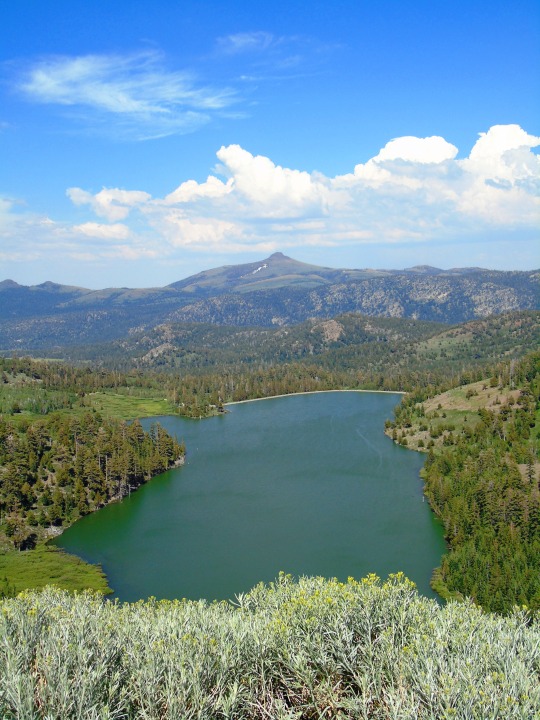
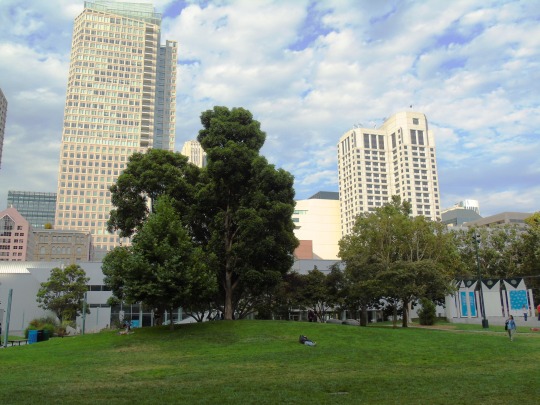





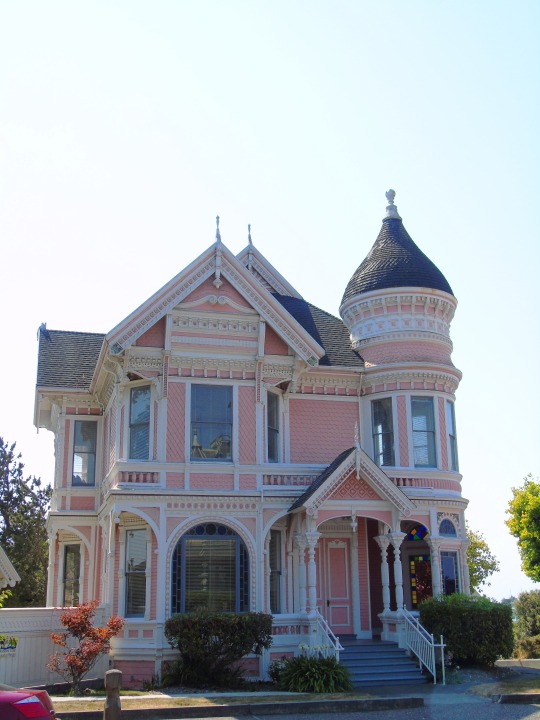




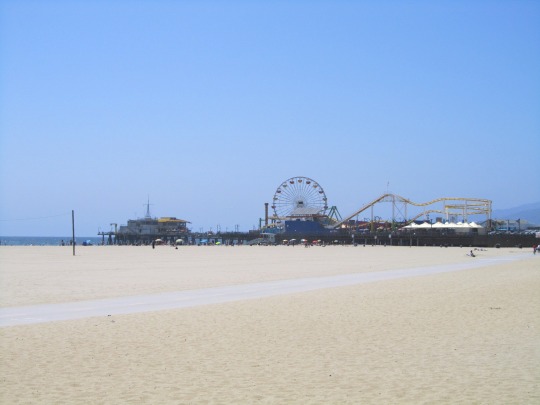


California was admitted as the thirty-first U.S. state on September 9, 1850.
California Admission Day
California Admission Day is observed on September 9 each year. It commemorates the day California was admitted into the Union as the 31st state in 1850 after it was ceded to the United States by Mexico in 1848. California became one of the few states to become a state without first being an organized territory. California Admission Day is not a federal holiday. Rather, it’s a local observance in the state, which implies that businesses, schools, and government offices remain open. In times gone by it was celebrated with great pomp and ceremony with parades and pageantry. Though low-key now, the day still marks an important part of Californian history.
History of California Admission Day
The Mexican-American War began in May 1846 when the U.S. declared war on Mexico. American settlers who lived in the territory of California in Mexico revolted against the Mexican government in what is known as the Bear Flag Revolt. The Americans captured Sonoma, hoisted a Bear Flag in the area, and declared it the California Republic. On July 9, 1846, Navy Lieutenant Joseph Warren Revere arrived in Sonoma and replaced the Bear Flag in the territory with a United States flag. Lieutenant Revere officially declared California a possession of the United States. In February 1848, Mexico and the U.S. signed the Treaty of Guadalupe Hidalgo to end the war. This treaty meant that Mexico had to yield a large portion of its Southwest territory — including present-day California — to the U.S.
As of the signing of the treaty, California had a meager population that was not up to the 60,000-inhabitant benchmark a territory needed to achieve statehood. Earlier in January 1848, gold was discovered on the American River near Sacramento, and the territory witnessed a massive influx of immigrants looking for work and good fortune. Thanks to the Gold Rush, a huge increase in population and wealth followed, thus necessitating the need for civil government and local policies.
In 1849, Californians demanded statehood, and California became the 31st state on September 9, 1850. California joined the Union as a free, non-slavery state by the Compromise of 1850 in just about two years of the territory’s incorporation. Its first capital was in San Jose before it was moved to the city of Vallejo for lack of necessary facilities. The capital was later moved to Benicia, a small town, and subsequently to the riverside port of Sacramento in 1854.
California Admission Day timeline
1846
The Bear Flag Revolt
American settlers in California stage a revolt against Mexican authorities.
1848
A Treaty for Peace
The United States and Mexico sign the Treaty of Guadalupe Hidalgo to end the war between the countries.
1850
The Compromise of 1850
The Compromise of 1850 is signed and California is admitted as the 31st state to the Union.
1911
Adoption of the California State Flag
The California State Flag, based on the original Bear Flag, is adopted by the state legislature.
California Admission Day FAQs
Is California Admission Day a federal holiday?
California Admission Day is not a federal holiday. It’s a local observance in the state of California. Schools, businesses, and government offices remain open.
What are other names for California?
California is also known as ‘The Golden State, ‘The Land of Milk and Honey,’ ‘The El Dorado State,’ and ‘The Grape State.’
What is California famous for?
California remains one of the most popular destinations throughout North America. The state is especially famous for Hollywood, Disneyland, and the Golden Gate Bridge. Other unique landmarks in California include Coachella, Silicon Valley, the Wine Country, and Surf Culture.
California Admission Day Activities
Visit the Golden StateIf you’re a history buff, today’s the perfect day to visit California. Museums around California offer various resources and artifacts to help you learn more about the state’s rich history. Take a day trip or make a holiday of it and travel to more than one.
Enjoy the special eventsCalifornia Admission Day is observed with special events at schools, museums, and organizations throughout the state. Public officials often grant special addresses about its history and significance.
Take a trip to SonomaCalifornia Admission Day has been observed particularly in the Sonoma area since 1850. It would be nice to visit the area where it all began. Don’t forget to enjoy the state’s beautiful beaches, valleys, and mountains as you celebrate with them!
5 Fun Facts About California
Originally named “the Grizzly Bear State": California has renamed the Golden State from its initial name “the Grizzly Bear State” as the bears went extinct.
The state motto is ‘Eureka!’: The Greek word means “I have found it!” and alludes to the discovery of gold in the Sierra Nevada.
Redwood is the official state tree: California’s official state tree is the redwood, as designated in 1937.
It’s called ‘The Grape State’, too: Over 300,000 tons of grapes are grown in California annually, and the state produces more than 17 million gallons of wine each year!
Blue jeans: In 1873 blue jeans were imported for miners from Europe, making San Francisco the first place in the U.S. where jeans were worn.
Why We Love California Admission Day
Becoming a recognized state in the U.S.This event celebrates the day California officially became a state in the U.S. It was a protracted struggle but thanks to the peace treaty that ended the Mexican-American War of 1848, it was a done deal.
A tribute to the war heroesThe struggle to acquire California as a possession of the U.S. was not an easy one. It took a war, diplomacy, protests, and legislation to make it possible. This day celebrates the memories of everyone who fought to make it possible.
The population boost that came with the Gold RushCalifornia’s low population would have hindered its prospects to become a state and admittance to the Union. Thanks to the Gold Rush, the territory was able to have the 60,000 inhabitants it needed to achieve statehood.
#Mount Shasta#California#31st US State#9 September 1850#Pacific Ocean#San Francisco#Sierra Nevada#Yosemite National Park#Morro Bay#Sonoma#Big Sur#San Diego#Humboldt Redwoods State Park#Los Angeles#Napa Valley#Death Valley National Park#travel#original photography#vacation#tourist attraction#landmark#architecture#cityscape#landscape#USA#Lake Tahoe#Santa Monica#Santa Barbara#anniversary#US history
25 notes
·
View notes
Text
MOGAI BHM- Day 6!
happy BHM! today i’m going to be talking about Claudette Colvin, Mary Louise Smith, and Rosa Parks, as well as the Montgomery Bus Boycott!
Claudette Colvin-

[Image ID: A black-and-white photograph of the upper half of the body of Claudette Colvin, who, at the time of the picture, was a 15 year-old Black girl with short curled hair, speckled glasses, and a smile on her face. End ID.]
Textbooks across America tell stories of Rosa Parks- as they should. They, however, fail to mention the activists who did what she did before she did it. Claudette Colvin is one of these activists suppressed by white-dominated education systems.
Claudette Colvin was just 15 years old when, on March 2, 1955, her class at her segregated school was fervently discussing civil rights and the many ways the students had faced their rights being violated. Later that day, she was riding the bus home from school. The bus driver demanded that she get up and move to the back of the bus- but Claudette refused. She told the driver that it was her constitutional right to sit where she was sitting, which led to the driver calling the police, who grabbed her and arrested her. She later recalled the event saying "All I remember is that I was not going to walk off the bus voluntarily."
“I could not move, because history had me glued to the seat. . . It felt like Sojourner Truth’s hands were pushing me down on one shoulder and Harriet Tubman’s hands were pushing me down on another shoulder, and I could not move.”- Claudette Colvin.
Claudette was also not the first person to challenge bus segregation in this way, but her challenge was an influential event nonetheless and a predecessor to the famous and successful Montgomery Bus Boycott. A year later, Claudette would become one of the plaintiffs in a landmark civil rights case, and as a member of the NAACP Youth Council, her actions inspired fellow NAACP member Rosa Parks.
Mary Louise Smith-

[Image ID: A somewhat-grainy, black-and-white photograph of the face of Mary Louise Smith, a Black woman with medium length hair. She has a slight smile on her face and is resting her face in her right palm. End ID.]
Mary Louise Smith, like Claudette Colvin, was interested in activism and civil rights from an early age. On October 21, 1955, just 5 months after Claudette’s arrest, Mary, at the young age of 18, was told to give up her seat on a bus for a white person, and when she refused, she was arrested for defying segregation laws and fined.
This incident was kept pretty quiet. Mary, like Claudette, was considered and rejected to be the spokesperson/center of a planned lawsuit against segregation in bus systems across Alabama, so her bravery was not well-known.
Mary Louise Smith was also part of a lawsuit that challenged segregation in the Montgomery YMCA, and she was a fervent civil rights defender.
Rosa Parks and the Montgomery Bus Boycott-

[Image ID: A black-and-white photograph of a crowd of Black people walking on a sidewalk lined with trees and parked cars. End ID.]
In 1946, a group called the Women’s Political Council, a group of female Black professionals, formed. One of their focuses was challenging Jim Crow segregation laws. In 1954, the WPC tried, albeit unsuccessfully, to challenge segregation on Montgomery buses by holding a meeting with Montgomery’s Mayor W. A. Gayle. Jo Ann Robinson, the WPC’s president, further urged Gayle to comply with their list of demands for bus desegregation, and warned him that boycotts were being planned.
On December 1, 1955, Rosa Parks, like Claudette Colvin and Mary Louise Smith before her, refused to give up her seat on a Montgomery bus to a white woman. This led to her arrest, which led to the rapid growth of a new movement- the Montgomery Bus Boycott.
The day after Rosa’s arrest, Jo Ann Robinson with the help of the WPC and many other local Black community leaders, began to create pamphlets calling for a protest of bus segregation. As word spread about the protest, more and more people became involved. On December 5, 1955, 90% of Montgomery’s Black population boycotted using the buses. That afternoon, the Montgomery Improvement Association, or the MIA, was founded during a meeting to coordinate and extend the bus boycott into a long-term campaign, and Dr. Martin Luther King, Jr. was elected president of the association.
On 8 December, the MIA issued a formal list of their demands: courteous treatment by bus operators; first-come, first-served seating for all, with blacks seating from the rear and whites from the front; and black bus operators on predominately black routes. The demands were not met, which led to the extension of the Montgomery Bus Boycott through the next year.
Montgomery city officials tried to quash the Montgomery Bus Boycott by punishing Black taxi drivers who helped Black citizens avoid using the buses- but in response to this, the MIA organized complex networks of taxi carpools to help Black citizens avoid the buses. After King’s home was bombed and he was indicted and charged for his involvement in the boycott, many feared the movement would end, but it kept going strong.
The Montgomery Bus Boycott began to make national news, which resulted in many people and outside organizations coming to lend support. More civil rights activists engaged in nonviolence training programs, founded organizations to raise funds for activists in the South, and partnered with King and the MIA to continue the movement.
Finally, on June 5, 1956, two of the predecessors of Rosa Parks’s act of defiance, Claudette Colvin and Mary Louise Smith, joined Aurelia S. Browder and Susie McDonald as plaintiffs in the case that ended bus segregation in Alabama. These four Black women had a case filed for them against public bus segregation, and on June 5, 1956, the federal district court ruled in Browder v. Gayle that public bus segregation was unconstitutional and illegal. The Montgomery Bus Boycott; however, continued for months beyond this until the federal circuit court actually enforced their ruling, especially in Montgomery. On November 13, 1956, they struck down public bus segregation laws, and on December 17, 1956, they rejected appeals to challenge Browder v. Gayle, and three days later, the bus desegregation order reached and was enforced in Montgomery. Thus marked the end of the Montgomery Bus Boycott.
Sources-
https://www.npr.org/2009/03/15/101719889/before-rosa-parks-there-was-claudette-colvin
https://www.zinnedproject.org/news/tdih/claudette-colvin/
https://theforgivenessfoundation.org/2021/08/07/black-history-month-mary-louise-smith-remembering-the-women-who-came-before-rosa-parks/
https://kinginstitute.stanford.edu/encyclopedia/montgomery-bus-boycott
https://kinginstitute.stanford.edu/encyclopedia/browder-v-gayle-352-us-903
71 notes
·
View notes
Text
micronations and their parent countries: a hetalia ramble
so i was thinking about this and couldn't find shit so here goes my headcanons
well it feels more like i'm stating facts but there's some headcanons in here and def since I haven't read the latest episodes properly. I'll probably make a proper headcanon list later
First off- i imagine them as like. What happens when a group of people get ambitious, and suddenly this personification pops up like some weird ritual. This post sums it up. I mostly agree with it.
anyways
Austria: from my parenting post: he's a lot better at ot it now, or maybe he just decided that trying tobdo anything to Kugel is just too much work. He's...definitely one of those parents with the slightly-feral child, and okay so he did try to profit off the kid but he does that with everything including his own famous composer, his own landmarks, and everything in between. Look, the kid's (usually) fed, has endless art supplies, and as long as he doesn't do anything too destructive Austria lets him be. Actually he and Sweden might be in kahoots, considering that time both Ladonia and Kugelmugel planned to do some construction work....(Veneziano is just a little jealous Kugel doens't have no-pasta punishments)
Speaking of Sweden: total pushover. Ladonia knows this. Sealand is learning this. If your eyes are big enough you WILL get the reward. But he's also best dad, such a dad, had a closet of dad stuff, we all know this he's a family man (Finland is the babysitter bestie that ends up at Sweden's half the time because the man lives in an IKEA and it's a little bit chaotic he won't lie) (I imagine they did quite a lot of renovation work to make the IKEA liveable, but that does beg the question: how many living rooms does Sweden have and can you imagine trying to leave Sweden's after a night of drinking- actually maybe that's why, Sweden was trying to do a social experiment on drunk Denmark-)
but anyways yeah, Finland lets Sweden deal with the children. His kids, his problem. It works, and anyways between them they already have Aland and all those other bits of their countries to deal with. Finland's got his hands full. Sweden's def the dad teaching you how to fix all the problems yourself though, Ladonia and Sealand def know how to unclog a toilet and change a sink pipe. Probably have the most human-like family experience, excluding NikoNiko. A sense of normalcy if you will.
America is more like the cool older cousin. He's already got 50 states and too many territories, why not add a few micronations? He and Canada treat the micros like the rest of their states minus the boring legislature stuff- their micronations can run wild, just don't cause problems, pay your taxes, and they can run themselves it's probably fiiiiine. I mean, look at Alaska and Hawaii! They're doing fine! Uh, don't look at Florida, or look at Quebec wrong. Though unlike the states and provinces, the gaggle of North America micronations tend to submit more to their ruling country considering 1. America and Canada are very very very strong and 2. Why try to fight for independence when you can chill out and have them do most of the work for you? Their states and provinces they reside in kinda just don't care too much, but Nevada and California are also Just Like That anyways, no comment on the Aerican Empire's colonization of Mars though. America and Canada keep some awareness of their micronations but unlike China and Japan, who have all their provinces with them in one house, it's spread over like....70 hours total....so for the NA bros, just an occassional check-in is usually fine to them. The micronations end up being a bit free-reign from this but America and Canada tend to be a little occupied being superpowers. America did get Molossia that weird pet of his as an apology a long time ago, and Canada sends maple flavored cookies to his micronations whenever he does a baking stream with America.
Australia: Probably the strictest of the parent countries, somehow. Cracks down on Hutt River's missed taxes, insists on the Wy Driveway Issue, etc. He's a wilderness hellscape trooper, alright? New Zealand is the cool uncle that's tired of playing parent so he lets everything be.
England looks at Sealand like his annoying little brother, or that little cousin you have to keep an eye on. He's plenty guilty for the whole war thing, but is usually too busy fighting France or America or restoring castles or dealing with royals to keep tabs on a child at the standard he'd prefer, so he lets Sweden handle Sealand most of the time. Sealand's first instinct is to bother England though, so that's that. It's actually kind of sweet, once you get past England's default mode being being pissed off by something and Sealand mouthing off on purpose to be The Problem (for attention). And England, despite his threats, will never leave Sealand out in the rain on his doorstep. To the point he's canonically sat through weird phone conversations. He's just...not ready to be essentially a parent again, after America and having to let go of Canada, Australia, India, New Zealand...... (he is also very scared of his family tree if he thinks about micronations)
Japan is an old man. He's a socially Awkward baby deer who's somehow in charge of all these prefectures and now he has to deal with NikoNiko poping up every so often???? Screw that! (He does give NikoNiko his personal number though. The kid might have a living family and micronation friends to hang with and the prefectures to bother, but Japan's still a believer in raising them right, and his door's open no matter how...odd....the circumstances are)
Seborga just hangs with the rest of Italy's former city-states. I headcanon that when Veneziano and Romano became the two prominant personifications for Italy, the others backed off like with Germany's older brothers uniting to form Germany, except the two already existed. Most of them disappeared, but a few stuck around and surrpsiingly because Seborga couldn't decide if he should be his own country or not he got to stick around too! Italy V doesn't mind and neither does Italy R, so Seborga finds himself quite relaxed with two older brothers, he's disappointed he doesn't get to grow up but he's probably the most "normal" of the micros and honestly? The Italies treat him like he's a state, so he's fine where he is in life. At least he gets to see his brotheres frequently enough
actually it was probably like he woke up to find out everyone was one country now, and was like "cool whatever i'll do the paperwork later", few asleep, and later on he was like "oh shoot" but Italy had unified and at some point Seborga kinda just accepted he was a micronation when his people went "yo" since he never actually signed anything and the Italies were like "lol thats funny yeah that's fine whatever". Oh gosh, does that make Seborga technically adoptively realted to Austria and by extension Germany and wait does that Make Kugel technically Seborga's cousin-
wait omg that one episode where Seborga asks Austria about Kugel.
welp that's enough for one day
idk thats it for now i need to catch up on the new guys.
#hetalia#headcanon#hetalia headcanons#hetalia hcs#micronationos#hetalia micronations#hws micronations#hws
14 notes
·
View notes
Text

The Tail O' the Pup is one of Los Angeles' most famous and distinctive hotdog stands, known for its unique architecture and cultural significance.
The Tail O' the Pup opened in 1946 and was originally located on La Cienega Boulevard in Los Angeles, California.
The stand was designed to resemble a giant hotdog in a bun, making it an example of "programmatic" or "novelty" architecture, a style where a building's design reflects its purpose.
The stand was initially operated by the dance instructor Eddie Blake and his partner, Beverly Blake.
Its unique design was intended to attract attention from passing motorists, a common strategy for roadside businesses in the mid-20th century.
Throughout the 1940s and 1950s, The Tail O' the Pup became a popular spot for locals and tourists alike.
Its whimsical design and central location in Hollywood helped it become a beloved landmark. It was a frequent haunt for celebrities and regular people, becoming embedded in the local culture.
The hotdog stand moved locations several times. It was first relocated in the 1980s due to a property development project.
This was a period of transition for many such structures, as the growth of Los Angeles forced businesses to adapt.
Due to its iconic status, efforts to preserve The Tail O' the Pup began in earnest in the 1980s and 1990s.
The stand became a symbol of Los Angeles’ cultural heritage and unique architectural history, attracting the attention of preservationists and architecture enthusiasts.
In 2005, the stand closed and was placed in storage after the lease for its then-current location was not renewed.
For over a decade, the hotdog stand's future remained uncertain, leading to growing concerns from the community about its potential demolition.
In 2016, The Tail O' the Pup was purchased by the 1933 Group, a company known for restoring historic Los Angeles landmarks.
After years of planning and restoration work, the stand reopened in 2022 at a new location on Santa Monica Boulevard in West Hollywood.
The restoration efforts included refurbishing the original hotdog-shaped stand and updating the menu to appeal to modern tastes while preserving classic items.
The reopening was met with significant media coverage and enthusiastic public reception, highlighting the enduring appeal of the iconic stand.
The hotdog stand itself is a compact structure, measuring approximately 17 feet in length and about 9 feet in height.
Its design is unmistakable, featuring a giant fiberglass hotdog nestled in a bun, with a vivid yellow mustard streak along the top.
The stand is constructed primarily from fiberglass and metal, materials chosen for their durability and ability to be molded into the unique hotdog shape.
The design also incorporates windows and a service counter, where customers can order directly from the sidewalk.
The Tail O' the Pup is a prime example of programmatic architecture, a style that was popular in the United States from the 1920s to the 1950s.
This style aimed to create eye-catching buildings that represented the products or services offered within.
Such designs were particularly effective in attracting the attention of passing motorists in the car-centric culture of mid-20th-century America.
The restoration efforts undertaken by the 1933 Group focused on preserving the stand's original design while making necessary repairs and updates.
This involved restoring the original fiberglass structure and ensuring it met modern safety standards.
The Tail O' the Pup is more than just a hotdog stand; it’s an enduring symbol of Los Angeles' unique cultural landscape.
Its playful design reflects the city's history of embracing novelty and entertainment, and it has become a beloved fixture for both locals and tourists.
Over the years, The Tail O' the Pup has appeared in numerous films, TV shows, and music videos, cementing its status as a pop culture icon.
Celebrities like Frank Sinatra, The Rolling Stones, and Jay Leno have been known to frequent the stand, adding to its allure.
The hotdog stand’s preservation and restoration efforts are a testament to the growing recognition of the importance of preserving mid-20th-century architecture.
As Los Angeles continues to evolve, The Tail O' the Pup serves as a reminder of the city’s past and the unique charm of its roadside attractions.
The reopening of The Tail O' the Pup was met with widespread community support and enthusiasm, highlighting the strong emotional connection many people have with the stand.
It has become a gathering spot where people can connect with the city’s history and each other.
The reopening of The Tail O' the Pup has contributed to the revitalization of its surrounding neighborhood.
It draws both tourists and locals, helping to boost foot traffic and economic activity in the area.
The Tail O' the Pup is a relic of a bygone era when car culture dominated Los Angeles and roadside stands were common.
It serves as a nostalgic reminder of that time, contributing to the cultural fabric of the city by representing a unique architectural style and business model.
The Tail O' the Pup stands as a quintessential piece of Los Angeles history, combining distinctive architecture with cultural and social significance.
Its revival not only preserves a piece of mid-20th-century Americana but also reinforces the importance of community, culture, and historical preservation in modern urban settings.
4 notes
·
View notes
Text
Famous stories of passing - Google Search

Yes it's exactly what it says. so go take a good look and see how this works.
seems a bit strange by some of the pics but then again with all the quilting we'd have to have dna to even try to understand
America in all it's hues


“Passing” Reflected in Three Films
December 3, 2021 | African American Movie Memorabilia, African Americana, Black History
The Netflex film Passing deals with the African American topic that has come to be known as “Passing” when a person classified as a member of a racial group is accepted or perceived (“passes”) as a member of another. Historically, the term has been used primarily in the United States to describe a person of color or of multiracial ancestry who assimilated into the white majority to escape the legal and social conventions of racial segregation and discrimination.”
These three films, Imitation of Life (1934), Pinky (1949) and Passing (2021) each deal with a Black woman, who, because of her light skin, passes for white and the ramifications that occur when that reality becomes a significant factor in her life.
IMITATION OF LIFE
The above poster: Np: Realart Pictures, 1949. Vintage original 41 x 27″ (104 x 69 cm.) one sheet poster. Conserved on linen, with minor touch ups at old fold lines, near fine.
The first of these film was a landmark film of the 1930s. Directed by John M. Stahl with a screenplay by William Hurlbut and eight additional writers, is based on Fannie Hurst’s 1933 novel of the same name. The film stared Claudette Colbert, Louise Beavers, Warren William, Rochelle Hudson, and Fredi Washington. The film was originally released by Universal Pictures and later re-issued in 1936. A 1959 remake with the same title was directed by Douglas Sirk.
Story
Two young women, one black, one white, both widowed with young daughters, come to live together and start a pancake business which eventually makes them wealthy. The young black girl, who is light-skinned, repeatedly tries to disappear into the while world, with tragic consequences.
Reception
This is the only Hollywood film of the 1930s which attempts to deal with the issues of race and racism: “The one film of the Depression to suggest that a contemporary race problem existed in America. It was also an unintentional comment on the exploitation of its African American character Delilah.” (Bogle, Hollywood Black, p. 40)
The themes of the film, to the modern eye, deal with very important issues—passing, the role of skin color in the black community and tensions between its light-skinned and dark-skinned members, the role of black servants in white families, and maternal affection.
Consequence
In 2005, Imitation of Life was selected for preservation in the United States National Film Registry being deemed “culturally, historically, or aesthetically significant”. It was also named by Time in 2007 as one of “The 25 Most Important Films on Race”. The film was nominated for Best Picture, Best Assistant Director and Best Sound Recording, at the 7th Academy Awards.
PINKY

Pinky Is a 1949 American drama film directed by Elia Kazan and produced by Darryl F. Zanuck, from a screenplay by Philip Dunne and Dudley Nichols, based on Cid Ricketts Sumner’s 1946 novel Quality. It stars Jeanne Crain as the title character, a young light-skinned black woman who passes for white. It also stars Ethel Barrymore, Ethel Waters and William Lundigan.
Story
Pinky is a black woman so fair-skinned she was able to pose as white throughout nursing school. Newly graduated, she flees south to visit her grandmother after a doctor, unaware of her true ancestry, proposes to her.
Unsure how to react, she looks to her grandmother, who warns her that only trouble will come of an interracial marriage. Pinky agrees and instead stays to help her grandmother care for an elderly, rich, and fatally ill white woman, who dies and, to the horror of the white community, leaves her stately home and property to Pinky. Rejecting the entreaty of the doctor who proposed to her, she remains in the community and establishes “Miss Em’s Clinic and Nursery School”
Reaction
Pinky was released theatrically in the United States on September 29, 1949 by 20th Century-Fox. It generated considerable controversy due to its subject of race relations and its casting of Crain to play a black woman. It was nonetheless a critical and commercial success, and earned Crain, Barrymore and Waters Academy Award nominations.
PASSING

Passing, the novel, is by American author Nella Larsen, first published in 1929. Set primarily in the Harlem neighborhood of New York City in the 1920s, the story centers on the reunion of two childhood friends—Clare Kendry and Irene Redfield—and their increasing fascination with each other’s lives. The title refers to the practice of “racial passing,” and is a key element of the novel. Clare Kendry’s attempt to pass as white for her husband, John (Jack) Bellew, is a significant depiction in the novel and a catalyst for the tragic events.
Passsing, the film is a 2021 black-and-white drama film written, produced, and directed by Rebecca Hall in her feature directorial debut. … The film stars Tessa Thompson, Ruth Negga, André Holland, Bill Camp, Gbenga Akinnagbe, Antoinette Crowe-Legacy, and Alexander Skarsgård.
The film follows the book’s storyline: Mixed-race childhood friends reunite in middle class adulthood and become increasingly involved in each other’s lives and insecurities. While Irene identifies as African-American and is married to a Black doctor, Clare “passes” as white and has married a prejudiced, wealthy white man. This renewed acquaintance ignites a mutual obsession that threatens both of their carefully constructed realities.
#Famous stories of passing - Google Search#African-American Memorabilia#Black Memorabilia#Original Vintage Movie Posters#Passing for White#“Passing” Reflected in Three Films
3 notes
·
View notes
Text
A queer Oz
Oz is queer. There is no denying it. The land of Oz, the world of Oz has been embraced by gay and lesbians and was included as part of the LGBT community long before this acronym even appeared. Oz-related medias have shaped the homosexual communities, and there is no better way to prove it than to point out a common term most people know by now… FOD. “Friend of Dorothy”, an expression to designate a gay man and was used very often in the second half of the 20th century in Northern America to speak of homosexuality while avoiding any of the nasty side-effects these kinds of talks could have in this time. It isn’t used much anymore, thanks to LGBT communities becoming much more open, known and accepted in more times, but it still was a very important part of gay culture and history, and a clear mark tying it all to the world of Oz, and the character of Dorothy Gale.
And when talking of the queer people and Oz, it is the 1939 movie that has to be talked about. It is THE catalyst, the landmark, the focus point of the gay connection with Oz, and one of the classic “queer movies” of the 20th century. The movie’s plot and style resonated deeply with gay people: it was about escaping a rigid, small town and an unpleasant black-and-white world, to enter into a fabulous and magical universe filled with extravagant characters and vibrant colors ; it was about a group of outcasts banding together as a group against threats and dangers ; it was about a young girl trying to escape into a world without any kind of troubles and who embraced openly the seemingly-flawed male characters she met along the way ; it was about learning that sometimes you do not need to change yourself to be who you want to be… Lines of the movie have been famously reinterpreted, such as the Cowardly Lion’s self description as a “dandy lion” or Glinda’s “Come out, come out, wherever you are!” ; and while the idea of a “rainbow flag” for the LGBT community would only arrive much later, the movie’s heavy emphasis on rainbows (and its most famous song, “Somewhere Over the Rainbow”) is thought to have played a key role in the queer communities decision to pick the rainbow as their symbol. Of course the fact that Judy Garland was the main actress of the movie also helped fuel this whole thing, since Judy Garland was one of the “gay icons” of the first half of the 20th century, adored by generations of gay men that made up a good part of her regular audiences (and let’s not even get in for example the number of gay men in her personal life, or how some people theorize that her funerals being held so close to the Stonewall Riots might have had some emotional influence over the incident).
The interesting thing is that, beyond the 1939 movie, the original Oz material, the book series written by L. Frank Baum, is also extremely queer-friendly (to the modern eye at least) and has been reused as an LGBT symbol. I can’t talk of Baum’s personal stance on gay people because I don’t think he ever brought up the subject – and anyway, we are talking about 1900s-1910s America, what do you expect? But the liberal use of words like “queer” and “gay” in their original, older sense in the stories, especially when talking about the inhabitants of Oz (and particularly about Dorothy’s recurring friends) has not escaped the modern eyes. The relationship between Dorothy, recurring heroine of the Oz books, and Ozma, the girl-queen of Oz, has also been re-interpreted in the light of modern sensibilities: the two girls are stated repeatedly to be good and great friends, but their relationship as “best friends” is also depicted with a lot of proclamations of “love”, used in a broad and more innocent sense than today, and with a lot of physical contact between the two, ranging from simply hands holding to actual kisses… The fact social and friendship norms back in early 20th century America were different back then has a lot to do about how what was just seen as two girls being best friends become easily reinterpreted as a lesbian relationship in modern days. A very similar case happens with the “queer friendship” of the Scarecrow and the Tin Woodman.
But there is one thing we cannot forget, it is the existence in the very second Oz book, The Marvelous Land of Oz, of one of the earliest “trans” characters of modern literature, Tip “Tippetarius” that is revealed to be Ozma, princess of Oz…
Overall now you will find “Oz” included in the name of numerous gay bars, dance clubs or gay-oriented business (ranging from small gift gay gift shops to charity organizations for the AIDs crisis) ; Ozian characters and imagery often appear during Pride parades ; and the fact the Oz stories have been massively used in the world of musical theater (a very predominantly queer and gay form of media in America) keeps reinforcing this connection – the “Wicked” musical being a good example of this. And by focusing on Dorothy herself, and her actress Judy Garland, the gay community actually poured in a very strange and dual feeling – as Dorothy embodied some sort of joyful, queer-embracing, free and colorful innocence the gay men strived towards, while Garland with her infamously sad and tragic life reflected eerily the sufferings and despair felt by the very same community, with as a result the song “Over the Rainbow” becoming as much of a sweet gay ballad as an anthem of queer pain.
- - - - -
Two additional facts about “Friends of Dorothy”.
One is a cultural one: “Friends of Dorothy” might not just be a reference to Dorothy Gale, but also a nod to a real-life Dorothy, Dorothy Parker, a critic and humorist socialite who was very close to the world of gay men in the 20s and 30s (who were frequent among her personal audience as well as among the guest of her renowned lavish parties).
The second is a fun trivia: Between late 70s and early 80s, the NIS (Naval Investigation Service, future NCIS) started an investigation in Chicago about homosexuality in the military services, and upon learning of the expression “Friends of Dorothy”… took it as a literal code name. As in, they seriously believed that there was a woman named Dorothy who was some sort of central figure or secret leader of the entire network of homosexual military agents in Chicago, and started hunting down for her, in hope of catching her and forcing her to give up the name of all the gay members of the military services. And the fact this “Dorothy” figure was a mysterious and elusive one they had a hard time tracking just reinforced them in their belief that she was truly the beating heart of some sort of secret homosexual ring or gay conspiracy…
Well, actually three facts – but the third is a bit less fun. The same way the “FOD” term was used less and less as the queer communities changed, and even came to be considered as more of a “slang” than a safe euphemism, newer and younger generations of gay men actually started… half-rejecting half-breaking away from the entire Oz tie to gayness. Half breaking away because the Oz and Judy Garland obsession is perceived by some as a truly “generational” phenomenon and as being more relevant to the gay communities of the 20th than the 21st century, and the 1939 movie and books themselves are getting much less prominent place in popular culture as time passes by. But I also include “half-reject” because some people actually take offense to the whole “Friends of Dorothy” business and some younger gay activists view this whole Oz connection as an embarrassing stereotype or shameful part of the gay community past that contributes to a feeling of overall silly campy caricature of the gay man. While not going into an open debate, an “anti-Dorothy” feeling seems to appear in the 21st century gay generations… Though in parallel, the 21st century generations actually completely rediscovered and brought to light Ozma of Oz as a trans character (while she had been hidden in the shadows for most of the 20th century), and while gay men might reject the Dorothy etiquette, the lesbian elements of Oz are going strong and popular today, so maybe the “Friends of Dorothy” phenomenon is simply shifting away from men and male homosexuality to rather solidify itself again around trans and lesbians.
42 notes
·
View notes
Text
The Field Building, Chicago
by Roger Jones
June 19, 2024

Two views of the Field Building, c. 1930
The field building, 135 S. LaSalle St., Chicago, was built 1928 - 1934, and designed by Graham, Anderson, Probst & White. Built by the estate of department store founder Marshall Field, it was the last major office building completed prior to a two-decade construction hiatus caused by the Great Depression and World War II. Its site formerly was occupied by the Home Insurance Building (1884), designed by William Le Baron Jenney.
Built at a cost of $12 million, the building featured 43 floors, and height of 163.1 m / 535 ft, and a surface of 111 484 m² / 1 200 000 ft. upon completion. It had entrances on both Lasalle and Clark Streets. The Field Building has also been known as the LaSalle National Bank Building, or Bank of America Building.
The building also featured 42 high-speed elevators, advanced technology at the time. Other innovations included polished aluminum window frames, radiant heat, dual elevators sharing one shaft, and pure drinking water delivered to drinking fountains in each office. The first and second floors were connected by escalators.
The building was designated a Chicago Landmark on February 9, 1994.

135 S. LaSalle, Solomon Cordwell Buenz
A distinctive moderne structure, the building's stripped-down design features smooth surfaces, limited ornament, and clean lines.
Straight vertical lines give the building a look as new as 1959. The main exterior material is limestone. The [lower] entrances made extensive use of white bronze and black granite, also with a complete lack of extraneous detail.
As far as materials and craftsmanship are concerned, another Field building may never be built, architects say. The cost would be prohibitive. Three kinds of marble were used in the vast lobby arcade and corridors - white, from Vermont; a green variety, from Italy; and a delicately toned tan marble, also from Italy.
The Field building took the entire output of the quarry producing the tan marble. It is irreplaceable, said Palmer. All the marble was cut and laid so that the patterns match from one slab to another.
Source: Fuller, Ernest, "Famous Chicago Buildings," Chicago Tribune, January 3, 1959

Home Insurance Building, 1885 (demolished 1931), William Le Baron Jenney, architect

Plaque in the Field Building lobby

Postcard view






Photos from the Ryerson and Burnham Libraries, Art Institute of Chicago




Photos from the Hedrich-Blessing Archive, Chicago History Museum

View of lobby, showing "bookend" tan marble above elevator doors

Field Building ground floor plan.
My photographs:






Graham, Anderson, Probst & White
The Chicago firm of Graham, Anderson, Probst & White was founded in 1912 originally as Graham, Burnham & Co., as the successor tot the D.H. Burnham Company. In 1917, the Burnhams left the firm, and Graham and the others, (William) Pierce Anderson, Edward Mathias Probst, and Howard Judson White formed the subsequent firm.
The firm got the majority of the big commissions from 1912 to 1936, including iconic buildings such as the Wrigley Building, Merchandise Mart, Field Museum, Shedd Aquarium, Civic Opera House, and the old main U. S. Post Office. They also designed built the Terminal Tower in Cleveland and Federal Reserve Bank in Kansas City.
It was the largest architectural firm under one roof during the first half of the twentieth century, its closest rival being the firm of Holabird and Root.
Architectural historian Carl Condit commented on the Field Building: "Graham, Anderson, Probst, and White turned their backs once and for all on the past and produced a Sullivanesque skyscraper stripped down to essentials, a dense array of uniform vertical limestone bands, topped by a horizontal spandrel that simply marks the outer face of the parapet at the roof."





Major works by the firm in Chicago: the Wrigley Building, Merchandise Mart, Civic Opera House, Union Station, and Field Museum

Sources:
Online:
Chicagology: Field Building
Chicago Landmarks
Lasalle Reimagined
Chicago History Museum images
YouTube: Why Chicago razed the first skyscraper / The Field Building
Architecture and planning of Graham, Anderson, Probst, and White, 1912-1936 : transforming tradition, by Chappell, Sally Anderson. Chicago : University of Chicago Press, 1992. Available on Internet Archive
Journals:
Field Building, Chicago Ill. Architectural record. 1932 Apr., v. 71, p. 277. Ill
The sky's the limit: high-rise history in Chicago. Inland Architect. 1990 Jan.-Feb., v.34, no.1, p.60-[63]. Photos
The Field building, Chicago's newest skyscraper. Architectural Record. 1934 Aug., v. 76, p. 120-128. ill, plans
6 notes
·
View notes
Text
#wall art#art print#interior decor#wall decor#home decor#prints#design#pattern#unique#interior design#decorative#decor#abstract#decorative arts#geometric#home decorarion#interior architecture#printmaking#woodworking#canvas prints#photography#artwork#art prints#artist#fractal art#surfaces#poster#murals#retro#painting
12 notes
·
View notes
Text
Indycar Driver Lore

Indycar Driver Lore Masterlist
Alexander Michael Rossi
Birthdate: Sept. 25, 1991
Hometown: Nevada City, California
Residence: Indianapolis
Height/Weight: 6’1”/154lbs
Rookie Year: 2016
Team: Arrow McLaren

Follow him on: Instagram Twitter
Career Stats
2016: Andretti Herta Autosport w/ Curb-Agajanian - 11th Overall
2017: Andretti Herta Autosport w/ Curb-Agajanian - 7th Overall
2018: Andretti Autosport - 2nd Overall
2019: Andretti Autosport - 3rd Overall
2020: Andretti Autosport - 9th Overall
2021: Andretti Autosport - 10th Overall
2022: Andretti Autosport - 9th Overall
2023: Arrow McLaren - 9th Overall
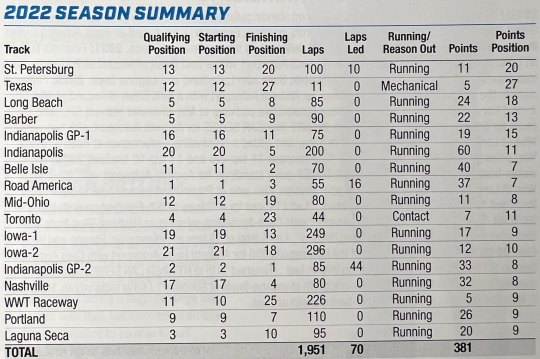
Podcast: Off Track with Hinch and Rossi
Ask Off Track Twitter
Off Track with Hinch and Rossi on YouTube
IMSA
2014 DeltaWing Racing Cars – Daytona 24
2019 Acura Team Penske – Daytona 24, Sebring
2020 Acura Team Penske – Daytona 24, Petite Le Mans, Sebring
2021 Konica Minolta Acura – won Daytona 24, Sebring, Watkin’s Glen, Petite Le Mans
2022 Konica Minolta Acura – Daytona 24
2024 Pfaff Motorsports – Daytona 24
2018 Baja 1000 2nd in class
2019 Baja 1000 mechanical problems
2021 Baja 1000 Class 7 victory
2019 Supercars Bathurst 1000 18th

-Co-Hosts a popular podcast with fellow driver James Hinchcliffe called “Off Track with Hinch & Rossi”
-Competed in Season 30 of CBS’ “The Amazing Race” with fellow driver Conor Daly as his teammate. The duo appeared in every episode.
-A music lover, he enjoys everything from alternative rock to country music.
-Enjoys skiing, dirt bikes, wakeboarding, cooking, and cryptocurrency. Recently obtained his private pilot license. His favorite city is Lake Tahoe, California.
-When unable to enjoy the great outdoors, you can find him fawning over his bourbon collection, hanging with his two dogs or binge-watching TV shows with his fiancée, Kelly.
-doesn't eat breakfast
-Makes good bacon
-Mint choc ice cream
-will only run when chased, prefers to swim
-Obsessively researches things he is interested it (smoking meats, pool chemicals)
-Has a pilot's licence (small aircraft)
-Tattoos: heartbeat on inside left forearm near elbow. Unknown on ankle
-Co-owns a plane with Ed Carpenter
-Prefers to be called Alex
-has a ‘candy closet’ in his basement, which is exactly what it sounds like.
-lived with James Hinchcliffe when he first came to Indianapolis (as did Conor Daly at the same time)

Iconic/memorable moments
INSIDE THE RACE: Alexander Rossi // Road America
INDYCAR 101 // ALEXANDER ROSSI
Alexander Rossi shares his "Rossi's Risotto" recipe | IndyCar | Motorsports on NBC
A Winning Strategy: Inside Alexander Rossi's Indy 500 Win! - Motor Trend Presents
Alexander Rossi explains his Indycar journey and transition from Formula One
Outside the Line: Alexander Rossi
7 Things with Alexander Rossi
NAPA KNOW HOW Blooper Reel with Alexander Rossi
Alexander Rossi + Avalanche
HONDA PACE CAR // COLTON HERTA AND ALEXANDER ROSSI
Alexander Rossi and Juan Pablo Montoya messing around with Tony Kanaan | 2022 Indy 500 Group Photo
Breakout Room Highlights with Scott Dixon, Tony Kanaan, and Alexander Rossi
Andretti IndyCar Drivers Test Their Pit Stop Skills | #AllAndretti | Indy 500
IndyCar's Alexander Rossi and Conor Daly on their The Amazing Race experience
Conor Daly's epic reaction to Alexander Rossi vs Santino Ferrucci!
Conor Daly & Alexander Rossi Visit Space Camp
Doug and Drivers: Alexander Rossi
Doug and Drivers, season 2: Alexander Rossi
Alex's Aliens
Butt Chugging Sunlight
Guess the song
Tiny Cars with James – Alexander Rossi
Giving milk to Alexander Rossi
James Hinchcliffe and Alexander Rossi: sharing a car at Daytona 24
Don’t touch the cones!!!
How tall are McLaren drivers?
Arrow McLaren: Red Flag Green Flag
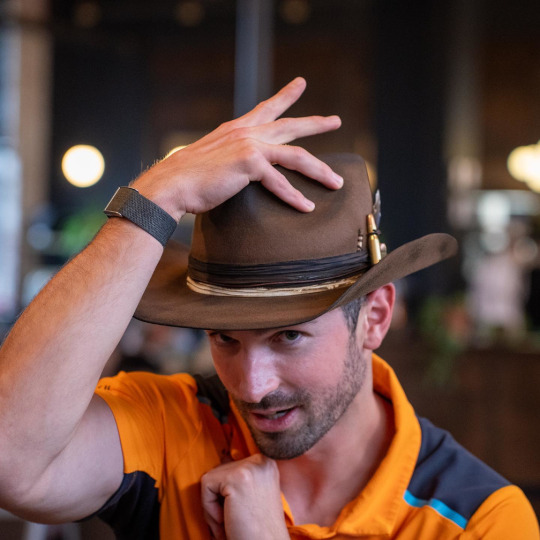
Arrow McLaren: Red Flag Green Flag Again
Measuring noses
Alex making faces
Which driver smells the best???
Wakeboarding
Alex and Felix put up a tent
Nashville Cowboy hat shopping
Indianapolis Motor Speedway Fair
Imitate Famous Landmarks
Phone Flip - Drivers in the Paddock
Part 1
Part 2
Driver Superlatives
Part 1
Part 2
Trying Different candy
part 1
part 2
Holiday Tree Blindfolded Challenge
Holiday Family phototshoot Behind the Scenes
Baking Challenge: Part 1
Baking Challenge: Part 2

Alex’s Creed obsession
Rainy day activities
Spill your guts game
Intro
Part 1
Part 2
Off Track with Hinch and Rossi – The Papaya One
Area Codes
Our cinnamon rolls
Alex has a Pickleball court
Go-to Karaoke song
Long Beach Runoff

Alex is known as the grumpy one, rarely smiling (so rare that it became a meme of sorts on social media of to comment when he did in 2022). This may be changing in 2023 with a change to McLaren after six years at Andretti. New season, new team, new Alex? Time will tell. He still isn't the most social of people, preferring people people (friends and family) over people (everyone else). He has a soft spot for child fans, often going out of his way to interact with them.
His conservative upbringing shows on occasion, particularly on his podcast where he and good friend James Hinchcliffe discuss the latest racing news and whatever else comes into their heads. The number of times James has said "No, Alex. We've talked about this." when Alex says something that could be considered concerning for a rational person to say (often related to those conservative views he was raised with) is numerous. Much credit to Mr. Hinchcliffe for having the patience to educate his friend.
Alex extensively researches (perhaps obsessively) what catches his interest, be it smoking meats, the PH of his pool, or weird flavored soda cocktails. He is generous to his closest friends, recently planning a "not Bachelor party" weekend for a friend. He is something of perfectionist and a (self-admitted) clean freak. He enjoys betting on sporting events, although now must do his betting through friends as he allowed James to parental lock the betting app on his phone.

Fanfic Lore
Good friends with James Hinchcliffe, James Hinchcliffe and Marco Andretti. The four could be considered a 'band of brothers'
Often paired with one of the others of the band.
Paired with teammate Pato O'Ward

38 notes
·
View notes